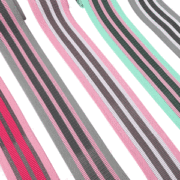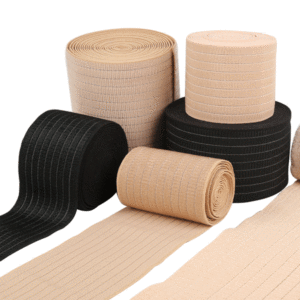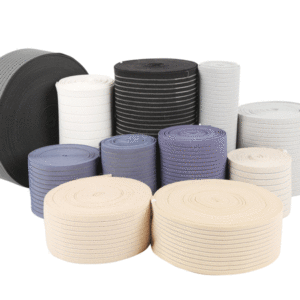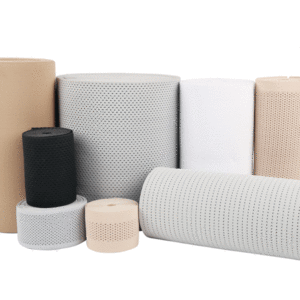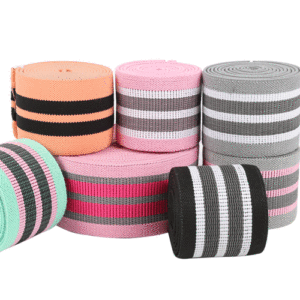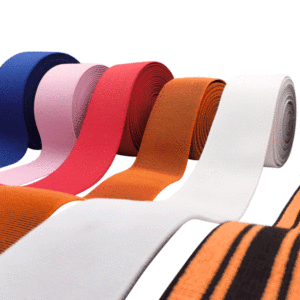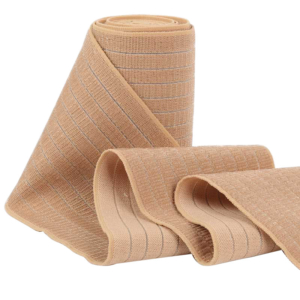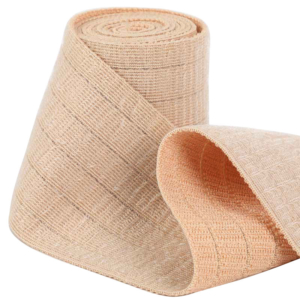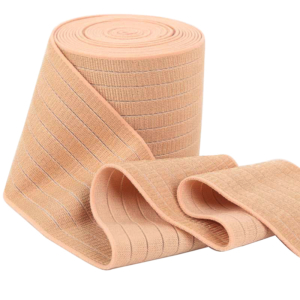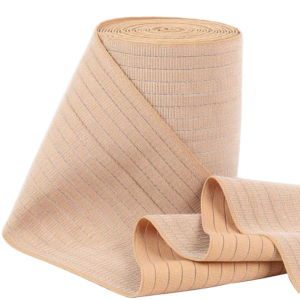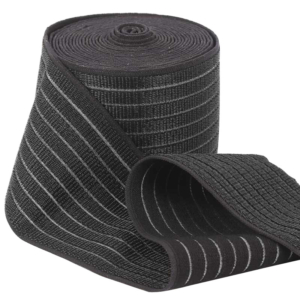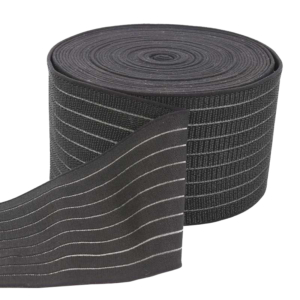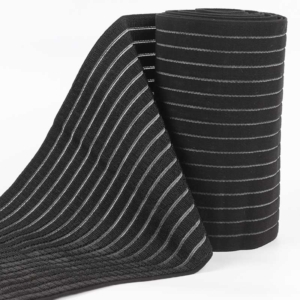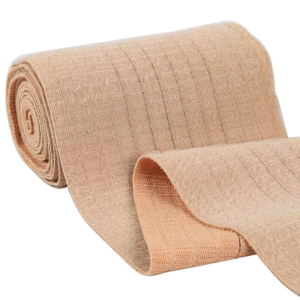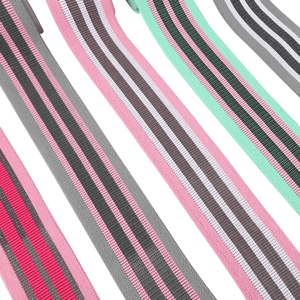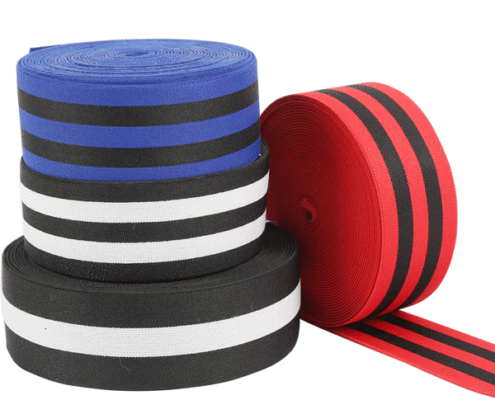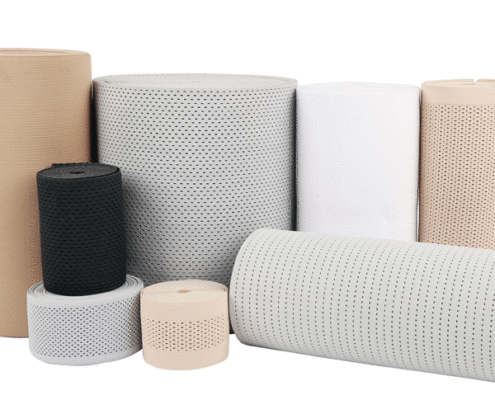What is woven elastic,knit elastic-types,materials and advantages and disadvantages of elastic band
What is woven elastic,knit elastic-types,materials and advantages and disadvantages of elastic band
There are various types of elastic webbing, which are widely used in clothing, shoe materials, luggage, industry, agriculture, quartermaster, transportation, sport, medical and other industrial departments.
Elastic band are usually made of polyester, cotton,nylon, latex or spandex.It’s softness,smooth and skin friendly compared to plastic elastic.
Types of elastic band available on the market.
So what are the characteristics of different types of elastic band ? HL-ELASTIC will tell you the characters of the different types elastic band in the market:
According to the knitting method, it can be divided into weaving, knitting and knitting.
1、 Woven Elastic (weaving elastic)
Weaving (shuttle weaving) is the interweaving of warp and weft. The yarn will be warped into a bobbin (this process we called it “pan head ”) after twisting, and the weft is shaken into a winding, then weaving on the machine. Due to the small width of the woven elastic, there are different weaving methods include ranging from single line, double lines and dozens of lines as well as single layer to double layer.
2、 Braid Elastic
Also known as spindle weaving elastic, the warp is weaving around the rubber wire through the spindle according to the “8” shaped track. The braid elastic surface is herringbone shape with a generally 0.3 ~ 2 cm width. It’s texture is between woven elastic and knitted elastic. Its variety is relatively simple, mostly used for garb. The braid elastic tend to use non-toxic and harmful TPU as raw materials. In addition, high elastic additives are able to added to enhance its elasticity.
3、 Knitting Elastic
It is weaving by warp knitting and weft lining method. Under the persuasion of the hook needle or tongue needle, the warp thread is sleeved into a knitting chain, the weft thread is lined in each knitting chain to connect the discrete knitting chains into a belt, and the rubber wire is covered by the knitting chain or clamped by two groups of weft threads. Knitted elastic can be weaved all kinds of mini stripes, color bar and scallop. The texture is loose and soft. It main made with high stretch nylon and spandex, widely used for women bras and underwear.
According to the materials, it is divided into cotton fiber and hemp fiber, nylon and polyester, acrylic fiber and polypropylene fiber, vinylon and chlorine fiber, spandex and fluorine fiber.
1、 Cotton fiber and hemp fiber
Both cotton fiber and hemp fiber burn immediately near the flame, burning rapidly, with yellow flame and blue smoke.
The difference between the cotton fiber and hemp fiber is the smell of burning and the ash after burning. Cotton burning gives off the smell of paper and hemp burning gives off the smell of plant ash; After burning, cotton has little powder ash, which is black or gray, while hemp produces a small amount of gray white powder ash.
2、 Nylon and polyester
The scientific name of nylon is polyamide fiber. It shrinks rapidly near the flame and melts into white colloid. It melts and burns in the flame, drops and bubbles. There is no flame during combustion, so it is difficult to continue combustion without leaving the flame, emitting celery flavor. After cooling, the light brown melt is not easy to grind.
The scientific name of polyester fiber is polyester fiber, which is easy to ignite. It melts and shrinks near the flame. When burning, it emits black smoke while melting. It is yellow flame and emits aromatic smell. The ash after burning is black brown hard block, which can be broken by fingers.
3、 Acrylic and polypropylene (PP)
The scientific name of acrylic fiber is polyacrylonitrile fiber. It softens and shrinks while near the fire. After fired, it emits black smoke and the flame is white. After leaving the flame, it burns rapidly and emits the bitter smell of burning meat. The ashes after burning are irregular black hard blocks, which are fragile by hand.
The scientific name of polypropylene is polypropylene fiber. It melts and shrinks while near the flame. Very easy to flammable. It burns slowly from the fire and emits black smoke after leave the flame. The upper of the flame is yellow and the lower is blue, emitting oil smell. The ash after burning is hard round light yellowish brown particles, which are fragile by hand.
4、 Vinylon and nylon
The scientific name of vinylon is polyvinyl formal fiber. It is not easy to ignite. It melts and shrinks while near flame. There is a little flame at the top during combustion.Flame becomes larger when the fibers are melted into colloidal shape with thick black smoke and emits bitter smell. After combustion, there are small black bead particles left, which can be crushed by fingers.
The scientific name of chloroprene fiber is polyvinyl chloride fiber. It is difficult to burn and extinguishes immediately after leaving the fire. The flame is yellow, with green and white smoke at the lower end. It emits pungent, pungent and sour taste. After burning, the ash is black brown, irregular hard blocks, and the fingers are not easy to twist.
5、 Spandex and fluorine fiber
The scientific name of spandex is polyurethane fiber. It melts and burns near the fire. The flame is blue while it burning and keep in melt and burning after leaving the fire with a special pungent odor. After burning, the ash is soft and fluffy black.
The scientific name of fluorine fiber is polytetrafluoroethylene fiber. ISO organization calls it fluorite fiber. It only melts near the flame, which is difficult to ignite and does not burn. The edge flame is blue-green carbonized, melted and decomposed, and the gas is toxic.

